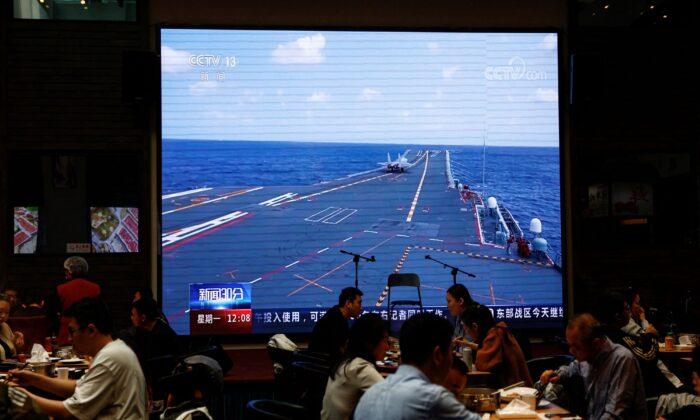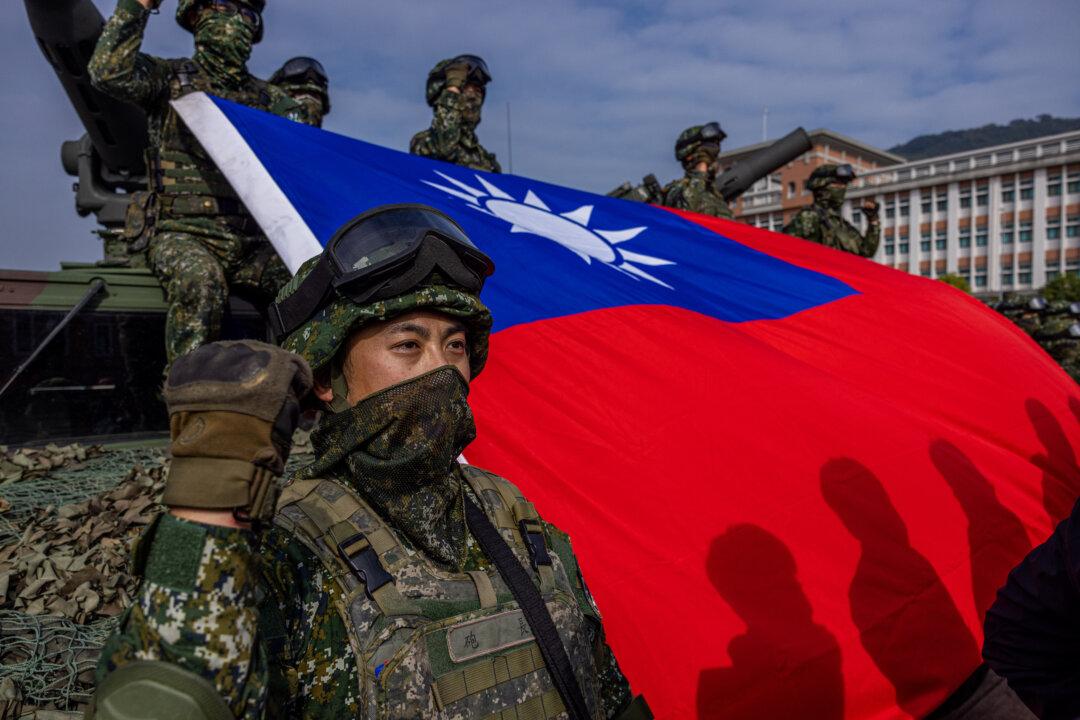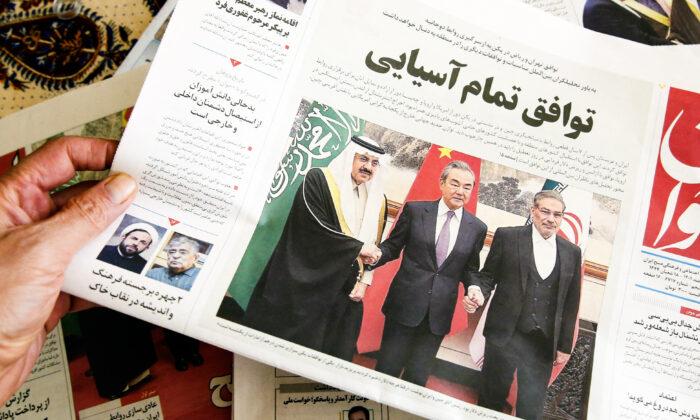Commentary
The period from December 2022 to the present date has seen unprecedented Chinese Communist Party (CCP) challenges to the sovereignty of Taiwan. This should be called the Fourth Taiwan Straits Crisis, keeping with the naming convention of two different crisis periods of the 1950s and one during the 1990s.
This period of tension is far more concerning. In the previous crisis, China didn’t have long-range hypersonic missiles that could target moving surface vessels such as American aircraft carriers. Nor did the Chinese regime face the largest mass protests ever across China as in the ”Blank Sheet Rebellion," causing immense concern that simultaneous civil unrest could cause instability within China.
The 2023 National Defense Authorization Act (NDAA) signed by President Joe Biden on Dec. 23, 2022, was replete with support for Taiwan. The most important element of the NDAA was the ”Taiwan Enhanced Resilience Act“ (TERA), a World War II-style Lend-Lease program that America provided to Great Britain to ensure a growing flow of weapons, munitions, food, and other supplies.
There were numerous other Taiwan-related parts of the NDAA in addition to TERA. Chinese state television claimed these legal authorities were turning Taiwan into a “military outpost.” The CCP reactions translated into aggressive air and naval challenges from December 2022 to April 2023, including a naval feint towards Guam, concurrent carrier operations in the South China Sea, almost daily air surges challenging the Taiwan Air Defense Identification Zone (ADIZ), amphibious landing demonstrations, the Chinese spy balloon drama over the Continental United States (preceded by Chinese spy balloons over the new American base camps in the Philippines), and also a Chinese carrier operating to the east of Taiwan demonstrating a complete encirclement of Taiwan.
China Is Pivoting to New Tactics
Military surges of aircraft, ships, and other equipment require maintenance and logistics. This is an art form the United States has perfected. American military mastery of maintenance and logistics sets them apart from all other militaries in history. China has studied this closely—but so far has not perfected it.There are noticeable and almost predictable “down” times as Chinese Air and Naval forces “reset” their equipment and perform maintenance. Interestingly, as American, Philippine, and Australian forces (along with Japanese observers) implemented Balikatan 2023, the Chinese forces began implementing a new tactic and capability. As their Air and Naval forces reset, the CCP introduced long-range, high-endurance drones around the perimeter of Taiwan.
These drone patrols have been traveling the eastern coast of Taiwan. This could be helpful for reconnaissance of the fallback airfields, ports, bases, and bunker complexes in the high hills and coasts of the eastern shore of Taiwan. These high-endurance drones are clones of Western models such as the well-known American Reaper, and the Israeli Heron drones. These Chinese drones can very likely be armed, which sends a message that not only are they conducting reconnaissance, but they also potentially have a “sting” to attack these eastern Taiwanese facilities or strike ocean vessels and aircraft approaching Taiwan from the east.
How Will ‘Drone Encirclement’ Influence the Taiwanese Population?
If the CCP can sustain and project an enduring drone presence around Taiwan, this is a new chapter in the CCP pressure campaign. The drones are simpler, more reliable, and have a longer dwell time than crewed aircraft. They don’t place a pilot at risk either. A downed Chinese pilot on the eastern side of Taiwan would be difficult to recover. An important question is how an enduring encirclement of Chinese drones will affect the morale and resilience of the citizens of Taiwan.One strong data point is Ukraine where months of coordinated attacks by low- and high-end Iranian drones, cruise missiles, and hypersonic missiles may actually steel and rally the Ukrainian population. The Ukrainians appear defiant and are emboldened to carry out very creative counter-attacks that have allegedly struck targets in Moscow in addition to asymmetric bombardment of targets deep inside Russia that have rendered ports, airfields, and bridges unusable. The simple answer is that if conflict starts, two can play this game. In addition, these Chinese drones are vulnerable to interception by aircraft or surface-to-air missiles, so an encirclement may be short lived.
American involvement in training with Taiwan is becoming more visible and regular, as reflected by the hard landing of a Taiwanese F-16 in Hawaii that turned out to have an American pilot—perhaps a resurrection of the Flying Tigers? Although a different target, the possible successful use of a Patriot missile against a Russian hypersonic missile, if true, will give confidence to Taiwanese citizens and the Taiwanese military who have a robust Patriot missile system network. All of these factors favor a spirit of endurance and resilience in Taiwan in the face of any attempt at a drone encirclement.
The Key Upcoming Event
The critical upcoming event the CCP is likely interested in influencing is the Taiwanese presidential elections in January 2024. President Tsai Ing-wen is ineligible for a third term, and William Lai will be the candidate for the Democratic Progressive Party (DPP). The flamboyant businessman Terry Guo again appears to be the lead presidential candidate for the KMT. With the experience of Hong Kong clearly in their minds, the continuation of a CCP pressure campaign leveraging the specter of a drone encirclement of Taiwan will likely be counterproductive. The Ukrainians have shown great resilience and the Taiwanese have been watching and studying the Ukrainians closely.Views expressed in this article are opinions of the author and do not necessarily reflect the views of The Epoch Times.






Friends Read Free